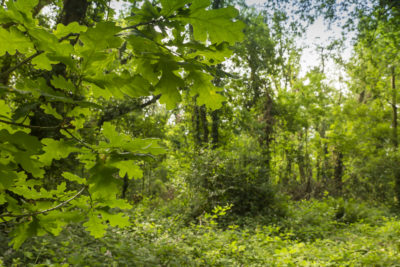Woodland
Definition
Native woodland (woodland that contains trees that are native to Ireland) once covered most of Ireland but once the first farmers came to inhabit the island over 5000 years ago, little by little the countryside changed to a landscape dominated by agriculture. The gradual dominance of agriculture has left the island with a very low percentage of woodland cover (one of the lowest in the EU).

Creation
This involves the planting of 160 native trees on 0.1 Ha. (quarter of an acre) of the farm. These sapling trees consisting of nine species (Pedunculate or Sessile Oak, Scots Pine, Downy Birch, Wild Cherry, Hawthorn, Hazel, Spindle, Crab Apple, Buckthorn or Alder Buckthorn) in a fenced plot to prevent livestock access. The larger species, (Oak and Scots Pine) are planted in the central area of the plot. The medium-sized species (Wild Cherry and Downy Birch) are planted around the central area (to avoid shading) and the smaller species are planted on the outer perimeter but some of the more shade tolerant species (Hawthorn, Spindle and Hazel) will be interspersed throughout the wood.
Maintenance
Newly Planted Woodland
It is vital that newly planted trees are kept free from encroaching grass and bramble especially during the first three years after planting. It is also important to ensure that protective fencing is erected to prevent livestock access. Check also for rabbit or hare damage. Use rabbit guards if necessary. Pruning in the first 3-5 years, if needed, will prevent forking later.
Existing Woodland
Existing woodland should be fenced to prevent livestock access. Deer can also damage woodland and fencing may be necessary if deer are preventing natural regeneration.
Invasive species such as Cherry Laurel and Rhododendron should be eradicated. This process is best achieved by cutting and treating with herbicide and treatment will need to be continued for at least three years.
Leave any fallen or dying trees as they are in a woodland. Remember that deadwood is a very important ecological component of native woodland habitat and a part of any healthy woodland. Dead or decaying trees recycle nutrients back into the soil providing a rich habitat for fungi, insects and many other species during the decomposition process. No need for bug hotels in a properly functioning woodland!
Benefits
Trees provide enormous environmental benefits such as food and shelter for a wide range of species. Trees are also vital for their role in carbon sequestration and their ability to soak up water and hence reduce flood risk. In particular, native trees are very valuable for biodiversity as they can support a huge range of insects, fungi, mosses, lichens, plants, birds and mammals.
Mature woodland, especially native woodland, is one of the most biodiversity-rich habitats and even small areas of woodland can significantly improve the biodiversity of intensively managed farmland.
Planting woodland, hedgerows or treelines will positively alter the visual landscape of the countryside for years to come. Removing these habitats will do the opposite and create a featureless landscape.
Further Information
Further information can be found in our publication “The BRIDE Project EIP Farm Habitat Management Guidelines” – link HERE
